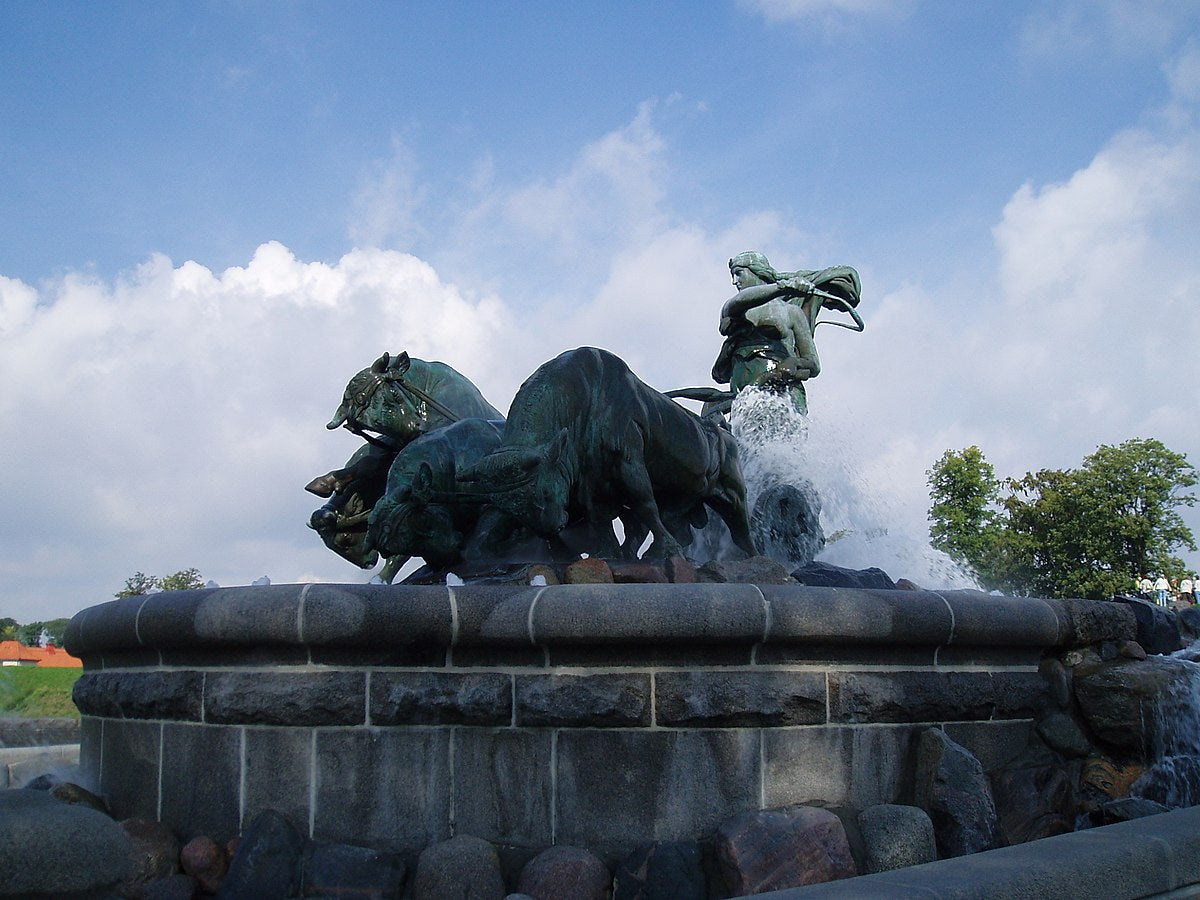Our story begins as King Gylfi of Sweden found himself alone and lost in the wilderness. As despair and the very real possibility of death by exposure and starvation draw near, he was was saved by the generosity of a wandering beggar, who gave the king shelter and food.

Horsemen and a beggar woman against landscape, by August Querfurt
“You have treated me like a king.” Gylfi remarked to the weathered woman, who sat shrouded in layers of tattered cloth, enveloped in an aura of neglect and destitution.
“Our bed was only this bare ground,” said Gylfi, “and our roof was only this whispering tree and the litter of stars beyond. But all that you had to share – your scraps of food, your store of understanding – you willingly offered.” Gylfi continued.
The woman's eyes resembled deep pools, enigmatic and strangely luminous, as she listened intently to Gylfi's words.
"You've treated me as royalty," Gylfi declared, "and now I must reveal to you that I am indeed a king."
The beggar-woman regarded the king stoically, her expression unchanged save for a subtle sniff.
“As you shared with me, I will share with you,” said Gylfi. “You’re welcome to as much of Sweden as you can plough with four oxen in one day and one night.”
With those words spoken, the paths of the king and the woman diverged. Gylfi retraced his steps through the forest, returning to his court. Meanwhile, the beggar-woman, none other than the Goddess Gefion, departed Midgard and ventured into Jotunheim.

Gefjon ploughs the earth in Sweden by Lorenz Frølich
Gefion traversed landscapes of bubbling springs and muddy cauldrons, circling the base of a towering mountain until she reached a secluded valley teeming with fertility. There, in the solitude, grazed four colossal oxen – her sons, born of a mix of her divine lineage and Jotun blood.
Leading her sons back to Midgard and the land of Sweden, Gefion selected a parcel of land, fertile and picturesque, and harnessed the mighty oxen to a colossal plough. With each furrow carved into the earth, the soil yielded, revealing its hidden richness beneath.
With laughter on her lips and determination in her heart, Gefion's sons dragged forth a vast expanse of land, their laborious efforts marked by sweat and strain. The Goddess urged them on and they waded into the sea, still hauling the land behind them, until at last they stopped in the middle of the ocean.

Gefion Fountain (1908) by Anders Bundgaard
“Leave the land here,” Gefion said. “Let it lie here until the end of the world!” Gefion declared, unyoking the oxen from the plough, their eyes shining like moons mirroring her own. “Let this bountiful isle be known henceforth as Sjælland (Zealand).”

The Cliffs of Stevns south of Copenhagen
TThus, Gefion repaid Gylfi's generosity by claiming a portion of his realm. What expanded Denmark diminished Sweden, leaving in its wake a watery chasm where the land had been torn asunder, forming Lake Mälaren.
Henceforth, the contours of Sjælland’s coastline echoed the indents and recesses of Lake Mälaren, a testament to the enduring legacy of Gefion's divine intervention.
Sources
Simek, Rudolf. 2007 (1993). Translated by Angela Hall. Dictionary of Northern Mythology. D.S. Brewer. ISBN 0-85991-513-1
Orchard, Andy. 1997. Dictionary of Norse Myth and Legend. Cassell. ISBN 0-304-34520-2
Jesse Byock (2005) Snorri Sturluson, The Prose Edda. 1st. edition. London, England: Penguin Books Ltd. ISBN-13 978-0-140-44755-2
Faulkes, Anthony. Edda. Trans. 1982. Oxford University Press. ISBN-13: 9781389651922
Guerber, Hélène Adeline. 1895. Myths of the Northern Lands. American Book Company. ISBN 978-1-4400-9296-1












